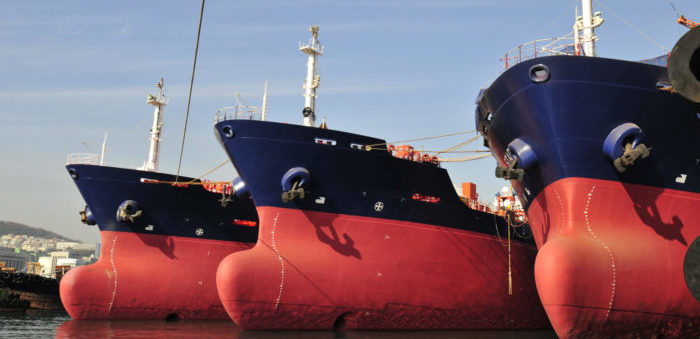DNV GL announced a new system designed for modern LR2 tankers, with easy-to-clean corrugated tank walls, deep-well pumps and high-performance tank washing machines.
Notably, the new class notation is mainly intended for new ships since some criteria, including stripping efficiency, are subject to specific test requirements. Nevertheless, it may be awarded to existing vessels as well, if they meet the criteria. The new ITC rules have been published in July 2019, with an effective date of 1 January 2020.
[smlsubform prepend=”GET THE SAFETY4SEA IN YOUR INBOX!” showname=false emailtxt=”” emailholder=”Enter your email address” showsubmit=true submittxt=”Submit” jsthanks=false thankyou=”Thank you for subscribing to our mailing list”]
Such vessels will be able to use the DNV GL class notation ITC to show that they can clean off crude oil residues effectively and quickly alternate between dirty and clean oil products. The new ITC class system indicates that tanks must be fully coated, and that coating must be compatible with any cargo the ship is intended to carry.
The cargo tank piping must either be coated or made from stainless steel. There are additional requirements in relation to materials for the heating coils and the tank-washing and pumping systems and a dedicated oil residue tank must be provided on board as well.
What is more, Olav Tveit, DNV GL’s vice president and ship type expert highlights that the ITC notation has three mandatory qualifiers; the first specifies that 80% of the total cargo tank tank-washing machine surfaces as a minimum, implying that the tank-washing machines must have a certified throw length. Olav Tveit says
This means DNV GL does not consider it sufficient for the water jets from the washing system to simply reach the tank walls at that distance. DNV GL also requires a minimum impact force that translates to a certain cleaning effect of the water jet.
The second qualifier focuses on stripping efficiency, which is indicated by the permissible amount of cargo residue left in a cargo tank and the piping after discharging. The draft version of the new rules proposes a maximum of 3 m3 or 3,000 L. It is noted that ships achieving a lower amount of residue will be in favor.
The third qualifier is the combined total area of upward-facing horizontal structures inside a cargo tank, excluding tank bottom and deck, in square metres. Mr Tveit added that “most conventional crude oil tankers in the 115,000 dwt range are fitted with horizontal structural elements, such as stringers, as well as vertical deck girders, web frames and large brackets. Their horizontal surfaces increase the area where sludge from crude or heavy fuel oil can accumulate, and vertical structures create shadow areas which the tank-cleaning machines cannot reach.”
Olav Tveit highlighted that
Using deep-well pumps in each cargo tank instead of a pump room allows shipowners to better strip the cargo tanks and piping from cargo residue and also simplifies the cleaning of the tanks and piping.
He explains that the reason is that all cargo piping is located on deck. By using deep-well pumps further enables better segregation when different cargoes are carried on board. Further to this, not having a cargo pump room means that more volume can be allocated for cargo.
Mr. Tveit remarks that
If owners are willing to make the necessary investments required for the ITC class notation, their vessels will be in a better position than a traditional ship to switch between cargoes rapidly, depending on the qualifiers they choose.
In March, Maersk Tankers announced that it has decided to invest in four scrubber systems to be installed on four LR2 vessels in the Maersk Product Tanker fleet before January 2020, in order to comply with the IMO’s sulphur regulation.
Specifically, the scrubbers will be installed on one existing LR2 vessel, as well as three LR2 newbuildings within the Maersk Product Tanker fleet. Maersk Tankers also commented that installing scrubbers on smaller-sized tanker vessels is not currently financially viable.
































































